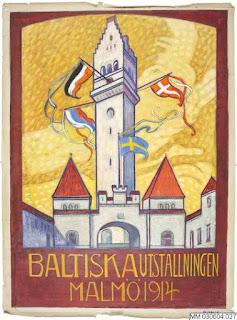Axel Törneman (1880 - 1925)
When Axel Törneman was 10 years old his family settled in Munich after having moved from Persberg and then to Stockholm. As a young man he enrolled in the Academy of Fine Arts in Munich, where he trained under the Russian master Anton Azbé and German Symbolist Franz von Stuck. These mentors were the first of many to inspire Törneman to develop a dynamic and international understanding of painting from an early age. Azbé was also the acclaimed teacher of Alexei Jawlensky and Wassily Kandinsky, and so the young Törneman was quickly exposed to the emerging styles and philosophies of groups such as Die Phalanx, founded by Kandinsky in 1901, and the Dachau Artist Colony.
Törneman thereafter studied in Paris from 1902 to 1905, where he focused on color and the physicality of paint as championed by the Post-Impressionists. It was in these early years that Törneman developed an expressionistic style, distinguishing himself from the traditional conventions of the Swedish academic painters. When he returned home, he was invited by Emil Nolde to join Die Neue Künstlervereinigung, the artist group that would give birth to Kandinsky and Franz Marc’s famed Der Blaue Reiter. Törneman was the only Swede to which an invitation was extended.
Having established his own unique artistic voice within the schools of Munich and Paris, Törneman rose to significance in his native Sweden and was recruited for large-scale commissions, notably important ceiling murals. These projects led him to Italy in 1912 to study frescoes and mosaics in preparation. It is unsurprising that Törneman became interested in the Italian Futurist movement, which emphasized the power of strong color and line to suggest speed, capturing abstract concepts in visual representation.
In his short but prolific lifetime, Axel Törneman came to embody the driving force of Swedish Modernism at the turn of the 20th century. He died at the age of 45 from an internal bleed due to complications from a persistent ulcer. Töreman was an intense and passionate man, self-aware of his tendency to paint obsessively, shutting himself away from the outside world.






















































































No comments:
Post a Comment